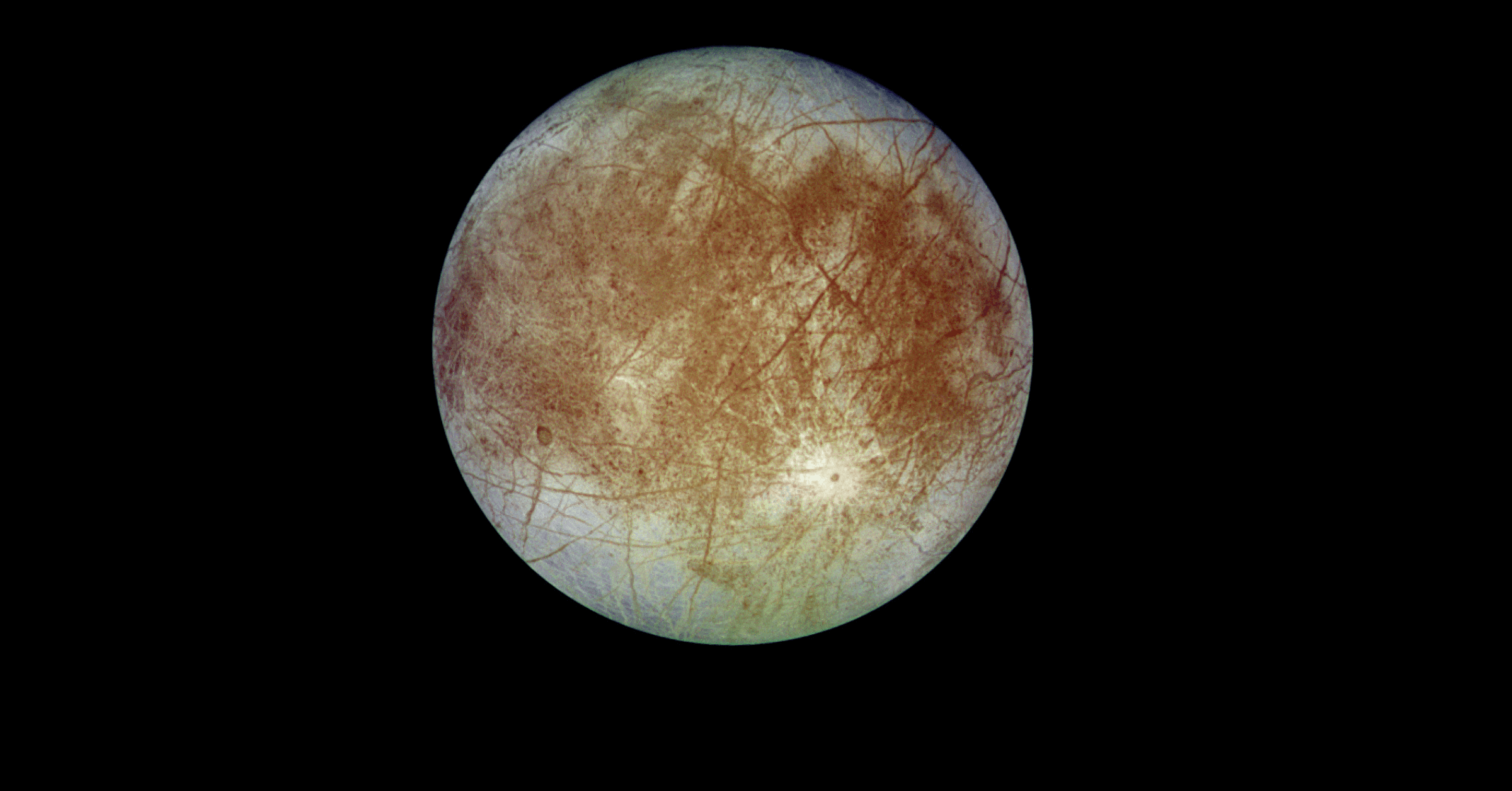- Europa qualifies as a habitable place because it has all the components necessary for life, such as water and oxygen.
- Although, there are a lot of things about the moon that are still in search.
- Astronomers say that Europa is one of the most likely places in the Solar System (other than Earth) where life could exist because it contains icy water and its atmosphere has molecular oxygen O2.
- The under-ice ocean on Europa is considered as the most likely place for potential habitability.
- Europa’s inside temperature/atmosphere is warm and very thin and is entirely made up of Oxygen molecules (O2).
- Since, Europa is not capable of taking energy from “Sun” therefore astronomers believe that millions of fast moving charged particles are a reason for the huge amount of energy in the moon.
- Charged particles from space collide with the icy surface of the moon and cause water vapors to split into oxygen and hydrogen.
- Hydrogen produced in the process escapes from the atmosphere and only oxygen retains.
- That is how these charged particles maintain the oxygen atmosphere of Europa.
Can you breathe on Europa?
- Well, it would be extremely hard for humans to breathe on Europa as its oxygen atmosphere is very thin.
- NASA’s one of the efficient telescopes (Hubble Space Telescope) succeeded in observing the very light atmosphere of Europa.
Does Europa Have Oxygen?
- YES, the entire atmosphere is made up of molecular Oxygen (O2).
- The oxygen on Europa is not of biological origin. It is produced from water vapors through the process of radiolysis (dissociation of molecules via radiations).
- Charged particles from the magnetosphere environment of Jupiter and ultraviolet radiations from the sun collide with the icy surface of Europa and cause water to split into oxygen and hydrogen.
- Hydrogen produced in the process escapes from the atmosphere and only oxygen retains.
Does Europa Have An Atmosphere?
- YES, the Hubble Space Telescope (HST) found that the atmosphere of the Europa Moon mainly consists of Molecular Oxygen (O2).
- Moreover, its atmosphere is very thin. And it could be one of the reasons for humans to face difficulty while breathing inside the moon’s atmosphere.
Can Europa Support Life?
- The icy shell of Europa might have water pockets that could support life.
- Europa is one of those places which qualifies as the habitable places for life due to its vast and deep oceans of icy water. Hence, life could be expected on Europa.
Is The Water On Europa Drinkable?
- Although, Europa has twice as much water than that on Planet Earth and not just that, water also overlaps the warm rocks of Europa yet researchers aren’t really confident about consuming it.
- Overlapping of water brings researcher’s major concern that
“What if water is very salty due to the chemical reactions caused by these rocks?”
- SO, it could be a risky step if you directly drink water on Europa without testing or purifying it.
Who found the water traces on Europa?
- Astronomer Gerard Kuiper observed the signs of water under thick ice on the surface of Europa (1970).
- Then 9 years later, the two Voyager spacecrafts in 1979 provided the first hints about the presence of liquid water on Europa.
- Further Galileo Spacecraft and Space/ground-based telescopes helped to increase the faith of astronomers about the icy ocean of Europa.
What is the Europa Moon made of?
- Primarily, Europa is made of silicate rock. The core region is probably composed of iron-nickel.
- The crust is filled with water-ice. Underneath thick ice, there are oceans of flappy ice water.
- The atmosphere is primarily composed of molecular oxygen (O2).
- Due to the shiny ice surface, Europa is able to reflect 5.5 times the sun rays than our planet Earth’s moon can.
Basic Information of Europa:
🔬 Subscribe to SciMail
Get the latest science discoveries straight to your inbox!
| Name of the Moon | Europa (named after Phoenician Princess) |
| Alternative Name | Jupiter II |
| Satellite of | Jupiter |
| Discovered By | Galileo Galilei (8-Jan-1610) |
| Named By | Simon Marius |
| Orbital Radius | 670 900 km |
| Orbital Speed (average) | 13 743.36 m/s |
| Gravity | 1.314 m/s2 |
| Escape Velocity | 2.025 km/s |
| Period of Rotation | Synchronous |
| Pressure of Surface | 0.1 μPa (10-12 bar) |


Leave a Reply